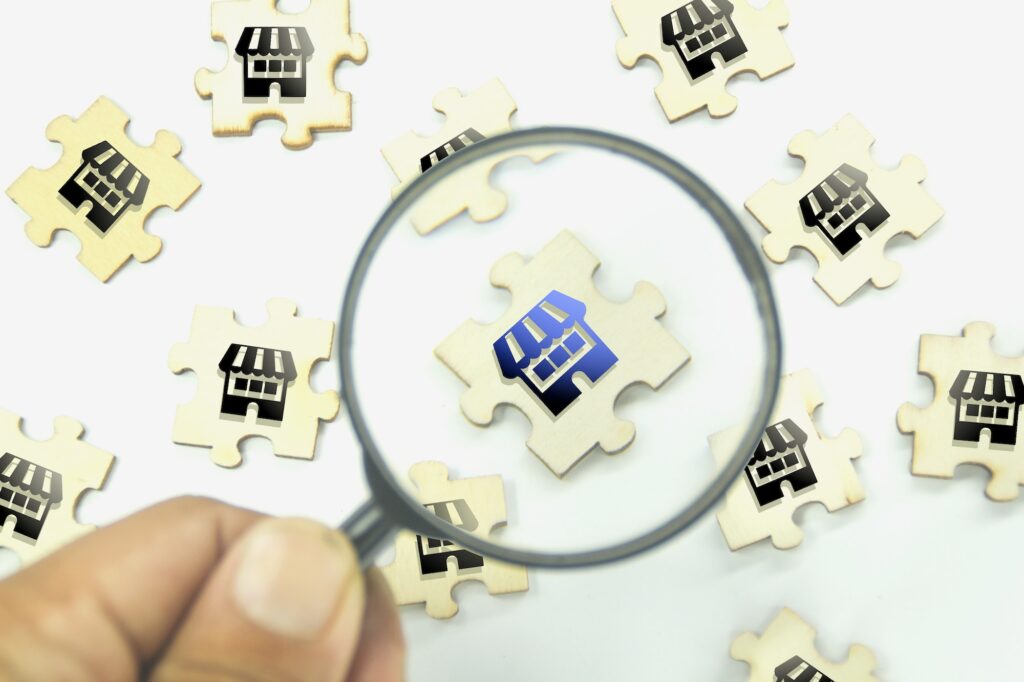Introduction
If you’re a regular YouTube user, you’re bound to have seen one of the multitudes of videos about dropshipping appear on your feed. For those of you who are unfamiliar with the concept, don’t worry; it really isn’t complicated at all. Dropshipping is the latest trend for those looking for online opportunities; it’s the perfect entry into eCommerce and doesn’t require massive start-up costs.
What is dropshipping?
Dropshipping is the perfect online retail business for any budding entrepreneur. There is no need to warehouse any stock as you only purchase the relevant products from your supplier when your customers place an order. The products are then shipped directly to your customer by your supplier. In effect, you act as the middleman, and your profit is made by marking up the products you sell.
The biggest advantage of having an online store is that you don’t need any operating capital required to run a traditional retail store and none of the other headaches that come with a physical shop.
Creating an online store can be done almost immediately from the comfort of your couch; you just need to ensure that you have chosen the best platform for your business. While you have limited operational responsibilities, your biggest challenge will be to gain those all-important customers!
Advantages and disadvantages of dropshipping
Let’s start off with the advantages, as there are many to this simple business model –
Easy and quick setup – starting a dropshipping business is relatively easy and quick to set up. You don’t require any prior experience, and once you have mastered the basics, you will be ready to go. In fact, you can probably set up your new business this evening.
Low start-up costs – As previously mentioned, your start-up costs are low, so a lack of funding does not hold you up, and your biggest investment will be in marketing and promoting your business.
Scalability is another key advantage, as there is no need to change your business model as your business grows and your daily costs remain relatively similar. The only change will be the welcome processing of more orders, and most of this can be automated to one extent or another.
Flexibility – dropshipping provides flexibility in how you manage your business and your time; it allows you to generate passive income while doing other things. For example, changing products or your strategy can be implemented immediately, and you don’t need to dedicate every waking minute to making your business work; it almost looks after itself if you have set it up correctly.
As with any business, there are always disadvantages, but fortunately, none of them are insurmountable when it comes to dropshipping.
Margins can initially be low, which doesn’t mean your business won’t be successful, but it may not be the overnight success you were expecting. The key to a successful store is researching which products are in demand but at the same time you don’t want to be competing in an over-saturated market.
Order processing challenges can occur despite the simplicity of the dropshipping business model. This generally occurs when sourcing products from multiple suppliers, especially if they are using different shipping solutions and billing processes.
Not everything is in your control – there are certain aspects of dropshipping you have no control over as you are relying on your suppliers for stock, processing the order, as well as shipping it to your customers. This can be tricky when it comes to customer service – it doesn’t matter to your customer if you are having challenges with your suppliers, they are dealing with you and your business, and it’s up to you to resolve their issues as quickly and efficiently as possible.
Shopify – the perfect solution for your dropshipping business
Now that you have a better idea of dropshipping and its advantages and disadvantages, we’re sure you are ready to start. Choosing the right platform can make all the difference to whether or not your dropshipping business will be a success.
And when it comes to eCommerce stores, Shopify is renowned for catering to every aspect needed to grow your business while maintaining a quality user experience for both you and your customers!
Starting your dropshipping store
One of the advantages of Shopify is that it allows you a 14-day free trial which lets you get a feel for how the platform works. These trials are always brilliant marketing strategies from their side as, generally, once you have invested the time in setting up a store, you are most likely to become a permanent member.
Identifying your niche market and target audience
Your first step will be to identify your niche market if you haven’t already done so. Shopify has a great post on how to validate your product idea. Their other suggestions include the following:
- Facebook Audience Insights: Facebook has roughly 9 billion monthly active users, and audience insights provide a well of information about their interests, demographics, and online activity.
- Google Keyword Planner: Google processes billions of searches each day, and with its keyword planner tool at your disposal, there’s no limit to the number of lucrative niches you could uncover.
- Google Trends: Like its keyword planner, Google Trends has a deep well of information about what products people are searching for, plus the ability to measure interest over time.
Once you have identified your niche market, you need to understand who your target market is. This is crucial as it allows you to gain a high-level understanding of what products to sell and how to market your new business. Differentiating your business from competitors will go a long way to determining your success.
Winning products – choose wisely
You have established your niche, your target audience and all you are left to do is to find those perfect products.
- It is best to avoid any products that are either too large or too fragile. For example, shipping fees on large products can easily cut your margins, and you certainly don’t want to replace fragile items that can be easily damaged during the shipping process.
- Look for unique and novel products you can market – your option is to stock products that people can’t easily source.
- When choosing a product, understand what you are solving for. Products need to have a function and solve a customer’s pain point.
- Keep it simple – we can’t stress this enough. Products that are complex to use may look fabulous, and the orders may pile in, but if your customer can’t figure out how to use the product, they will end up frustrated and dissatisfied.
- Unhappy customers aren’t returning buyers; they can either return the product or worse, leave a bad review.
Choosing the right dropshipping supplier
Your supplier can make or break your business, making it another key area that requires a bit of research. As with most online enterprises, the choices are endless, but considering the following factors will help you narrow it down.
- What products are you going to be selling?
- How many items do you anticipate selling on a daily or weekly basis – this will help you determine how large your preferred supplier’s inventory needs to be.
- In order to have decent margins, what prices do you require from your supplier and you will need to take their shipping costs into account
- What are their return policies, and do they require minimum order sizes?
- Take the time to research your suppliers, paying particular attention to reviews.
Another aspect to consider is making use of Shopify’s dropshipping apps. This allows you to automate the entire checkout process completely. If you’re still unsure, Shopify, which is mindfield of information, has created a list of their top 13 dropshipping suppliers.
Now that you’ve identified your supplier, it’s time for the fun part!
Creating your Shopify store
This is where the fun part starts. Before your set up your store, you will need to spend some time deciding on how to brand your business, as this is the first step in setting up your store. Remember, first impressions count!
Company name
Your company name is part of your brand story. It lets customers know more about you. You can think of it as an introduction to your customers, and it is what they will use every time they interact with your company.
Your company name should make a lasting impression and can make all the difference between grabbing a customer’s attention or getting last in the crowd. It can be overwhelming when trying to find the perfect name, but there are a few basics you can follow to keep you on track:
- Keep it simple and avoid hard-to-spell and pronounce company names
- Don’t pick a name that could be limiting as your business grows. If your company name is product specific, it will limit you from adding any other products or services.
- Research your potential company name online to ensure no other business has already registered it.
And if you are really stuck, there are online resources that can help, for example, the Shopify Business Name Generator. This is advantageous because it generates business name ideas and checks domain availability simultaneously.
Your brand's personality
Your brand’s personality is reflected in your choices regarding your logo, fonts, and colours. It is important to know exactly how you want your brand to be perceived in the market. Design is all about bringing your company’s personality to life.
As mentioned, every aspect of design communicates something about your brand, and finding the right font is no different. Keeping up to date with the latest trends is key, and ‘old-fashioned’ fonts can make your brand look outdated.
Colours are no different, and as mentioned in our article on what features make your site stand out, colour is often underestimated but can be one of your most impactful tools. Choosing the right colours isn’t just about aesthetics. The right colour choice captures people’s attention and communicates meaning.
Your logo is the visual representation of your company and will contain your brand colours and fonts. Coming up with the right logo can be intimidating, but there are plenty of resources to help you, including Shopify’s logo maker tool.
Once you have added your brand assets, your next step will be to choose a theme; fortunately, Shopify offers various templates to get you started. Try different themes so that you can find the perfect layout for your brand.
Another consideration to take into account is whether or not you want a custom domain. Custom domains are preferable as your customers will be able to find you far more easily. Research shows that businesses with a .com extension are viewed as more credible and established.
All that is left to do is add your winning products, and you are open for business!
Conclusion
Shopify is very intuitive, and you will notice that there are always options to learn more about the various tasks, custom apps, etc. It is also worthwhile taking advantage of the many available resources – simply go to their website and click on the ‘Start’ tab. Here you will find articles on just about anything you need to know to create a successful Shopify business!!
The best way to think of your Shopify store is as your own personal website –
- Planning and research are key; even if you are raring to go, it is worthwhile taking the time to get it right!
- Ensure that your branding is consistent across all your platforms; in other words, your Shopify store should match your existing branding on any other platforms, e.g., Instagram, Pinterest, LinkedIn, etc.
- Ensure that your content is SEO ready!
- Create consistent, original, high-quality content, which can easily be done through their blog post functionality.
We wish you luck with your new store, and remember, a great business is not all about selling. It is also about providing customers with an enjoyable experience and adding value. To ensure you have every aspect covered, you may want to plot out your customer’s journey; that way, you won’t have missed anything! And on a final note, it’s always worthwhile asking friends and family to have a look at your site – an outside perspective can make all the difference!







